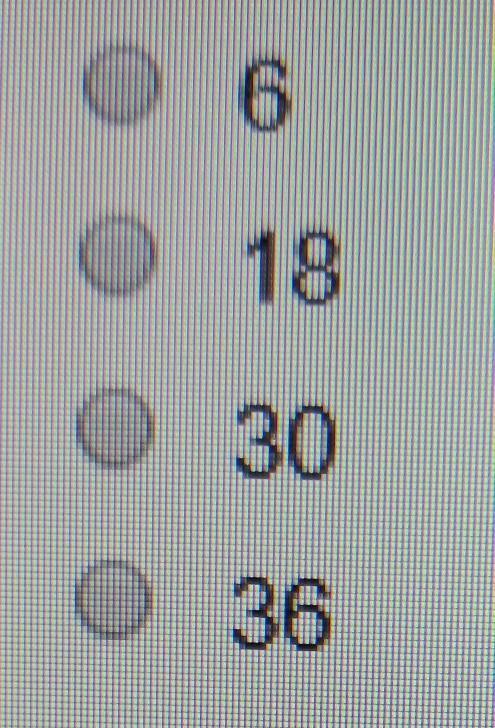
Mathematics, 02.06.2020 05:57 monai2005
Each question in this assignment asks you to describe a series of transformations that will transform the given pre-image into the final image. Each question will require two or more transformations. To receive full credit, you must describe each transformation in detail (specify lines of reflection, point of rotation, direction and degree of rotation, direction and distance of translation, etc.) PART 1: a.) Are the two figures in the image congruent? Are they similar? What does this tell you about the geometric transformations you will need to transform one of these polygons into the other? b.) Describe a series of at least two similar transformations that will transform ABC into A’B’C’: c.) There is more than one way to transform ABC into A’B’C’. Describe a second sequence of transformations that will accomplish this goal. Explain what tool you used as an aid in identifying a transformation sequence. PART 2: a.) Are the two figures in the image congruent? Are they similar? What does this tell you about the geometric transformations you will need to transform one of these polygons into the other? b.) Describe a series of at least two similar transformations that will transform polygon ABCDE into A’B’C’D’E’: c.) There is more than one way to transform polygon ABCDE into polygon A’B’C’D’E’. Describe a second sequence of transformations that will accomplish this goal. Explain what tool you used as an aid in identifying a transformation sequence. PART 3: a.) Are the two figures in the image congruent? Are they similar? What does this tell you about the geometric transformations you will need to transform one of these polygons into the other? b.) Describe a series of at least two similar transformations that will transform polygon MNOP into polygon M’N’O’P’: c.) There is more than one way to transform polygon MNOP into polygon M’N’O’P’. Describe a second sequence of transformations that will accomplish this goal. Explain what tool you used as an aid in identifying a transformation sequence. PART 4: a.) Are the two figures in the image congruent? Are they similar? What does this tell you about the geometric transformations you will need to transform one of these polygons into the other? b.) Describe a series of at least two similar transformations that will transform polygon EFGH into polygon E’F’G’H’? c.) There is more than one way to transform polygon EFGH into polygon E’F’G’H’. Describe a second sequence of transformations that will accomplish this goal. Explain what tool you used as an aid in identifying a transformation sequence. PART 5: c.) Are the two figures in the image congruent? Are they similar? What does this tell you about the geometric transformations you will need to transform one of these polygons into the other? d.) Describe a series of at least two similar transformations that will transform XYZ into X’Y’Z’: c.) There is more than one way to transform XYZ into X’Y’Z’. Describe a second sequence of transformations that will accomplish this goal. Explain what tool you used as an aid in identifying a transformation sequence.

Answers: 1
Another question on Mathematics

Mathematics, 21.06.2019 13:20
Part a what is the area of triangle i? show your calculation. part b triangles i and ii are congruent (of the same size and shape). what is the total area of triangles i and ii? show your calculation. part c what is the area of rectangle i? show your calculation. part d what is the area of rectangle ii? show your calculation. part e rectangles i and iii have the same size and shape. what is the total area of rectangles i and iii? show your calculation. part f what is the total area of all the rectangles? show your calculation. part g what areas do you need to know to find the surface area of the prism? part h what is the surface area of the prism? show your calculation. part i read this statement: “if you multiply the area of one rectangle in the figure by 3, you’ll get the total area of the rectangles.” is this statement true or false? why? part j read this statement: “if you multiply the area of one triangle in the figure by 2, you’ll get the total area of the triangles.” is this statement true or false? why?
Answers: 2

Mathematics, 21.06.2019 15:30
What is the missing reason in step 5? linear pair postulategivendefinition of complementary anglescongruent complements theorem
Answers: 1

Mathematics, 21.06.2019 18:00
Plz a. s. a. p.the table shows the number of male and female contestants who did not win a prize. what is the probability that a randomly selected contestant won a prize, given that the contestant was female? write the probability as a percent. round to the neares tenth, if needed.
Answers: 1

Mathematics, 21.06.2019 19:00
The test scores of 32 students are listed below. construct a boxplot for the data set and include the values of the 5-number summary. 32 37 41 44 46 48 53 55 57 57 59 63 65 66 68 69 70 71 74 74 75 77 78 79 81 82 83 86 89 92 95 99
Answers: 1
You know the right answer?
Each question in this assignment asks you to describe a series of transformations that will transfor...
Questions

Biology, 15.06.2021 19:00

Geography, 15.06.2021 19:00


Mathematics, 15.06.2021 19:00

Mathematics, 15.06.2021 19:00






History, 15.06.2021 19:00

Mathematics, 15.06.2021 19:00





Mathematics, 15.06.2021 19:00



Chemistry, 15.06.2021 19:00




